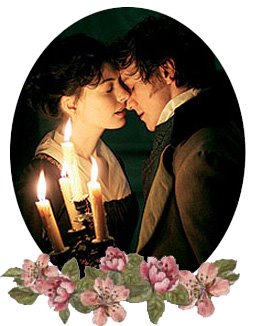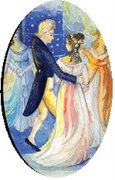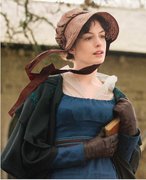The Jane Austen Centre Features.....
 Firstly an article entitled Art competition set to revive interest in Stoneleigh Abbey written in the The Courier, based in Warwick, UK.
Firstly an article entitled Art competition set to revive interest in Stoneleigh Abbey written in the The Courier, based in Warwick, UK.Excerpts from the article:
"In 1806, the house passed to the Rev Thomas Leigh, a relative of Jane Austen, who is believed to have based descriptions in Northanger Abbey and Mansfield Park on the house and its grounds."
"Four Leaf Clover, which runs events at the historic house, is launching a competition to draw or paint either the west wing or its 14th century gatehouse."
"Pictures can be any size up to A1, in charcoal, pencil, watercolour, acrylic, oil or pastel. Entry is free. The closing date will be September 29 and winners will be announced on October 10."
I appreciate that the majority of our readers are not local to Warwick in the UK but I wanted to make you all aware of this excellent attempt to awaken interest in people about something so wonderful.
____________________________________________________________________
 The Jane Austen Centre also points us to an article written by an English Literature teacher in the USA. It can be read here. The title of this article is "Why We Need Jane Austen or How to be a Gentleman with Examples Good and Bad."
The Jane Austen Centre also points us to an article written by an English Literature teacher in the USA. It can be read here. The title of this article is "Why We Need Jane Austen or How to be a Gentleman with Examples Good and Bad."He explains his experience of reading Pride and Prejudice with a group of young students and the joy it has brought him. Excerpts taken from the article:
"In short, Austen reminds us of the largely forgotten categories of the lady and the gentlemen. It is her genius to make us aspire to these roles even in a world where such notions are strange and often ridiculed."
"Austen’s gentlemen (I’m thinking especially of Darcy here) understand the call of duty; they are committed to family, reputation, propriety, and self-control. To be sure, Darcy takes himself quite seriously, but aren’t these pursuits serious by nature? To neglect one’s duty, to be careless of one’s family and reputation, to ignore the bounds of propriety and to indulge the appetites without restraint are not the actions of a gentleman. They represent, conversely, the behavior of a boor. Or, perhaps equally fitting, they are the actions of a male who has no sense of what it means to be a man."
Pic 1: Article in The Courier
Pic 2: Period drama website











































6 comments:
I really enjoyed reading that article, and think he has a good point. We do need more gentlemen in the world, gentlewomen too, for that matter.
Oh and I love that picture of Darcy! :)
Btw... what do you think, do I resemble our dear Miss Austen in this picture? http://mewithpeanuts.blogspot.com/2011/04/lika.html A friend thinks so, anyway, and I think I should take it as a compliment... :P
Hugs and kisses from Maria in Sweden (t minus 30 days and counting today! yikes... )
I agree with your friend Maria, there is definitely a resemblence.
Thanks for sharing the piccie with us. 30 days and counting ...
x
Rachel dearest, thank you so much for posting the article! You're such a sweet soul...
Maria, I do agree that you look thoughtful like our dearest Jane. It IS a compliment really! And wow, your pregnancy is gorgeous!
Thanks you guys! :) I've actually gained very little weight this time around (yey for me, less to take care of later on) and have been blessed with yet another very easy pregnancy. Now it's just the delivery... :P
20 days and counting... Most probably less...
Hugs and Kisses
/ maria in sweden
"Jane Austen, who is believed to have based descriptions in Northanger Abbey and Mansfield Park on the house and its grounds."
How could Jane Austen have based descriptions in "Northanger Abbey" on the house and grounds of Stoneleigh Abbey? Northanger Abbey was sent for publication in 1803. Jane Austen did not visit Stoneleigh Abbey until 1806, with her mother. We know from her mother's letters written at the time of the visit that neither she nor her daughter Jane had any idea what it looked like before they visited it.
The letters of Jane Austen's mother reveal that when she visited Stoneleigh Abbey in 1806 with her daughter Jane, neither of them had any idea what it looked like before they arrived. However, Gaye King asserts that the groundfloor plan of Stoneleigh Abbey corresponds in exact detail to the description of Northanger Abbey in the novel of the same name. Since "Northanger Abbey" was sent to the publishers in 1803, it is impossible that Jane Austen could have been the author of the novel. The author of "Northanger Abbey" and the rest of the Jane Austen novels was in fact Eliza de Feuillide, Jane Austen's cousin. Eliza almost certainly visited Stoneleigh Abbey when she passed within a mile of it on her journey to the North of England in 1794. If anyone wants any further details, they can read these in my book "Jane Austen - a New Revelation".
Post a Comment